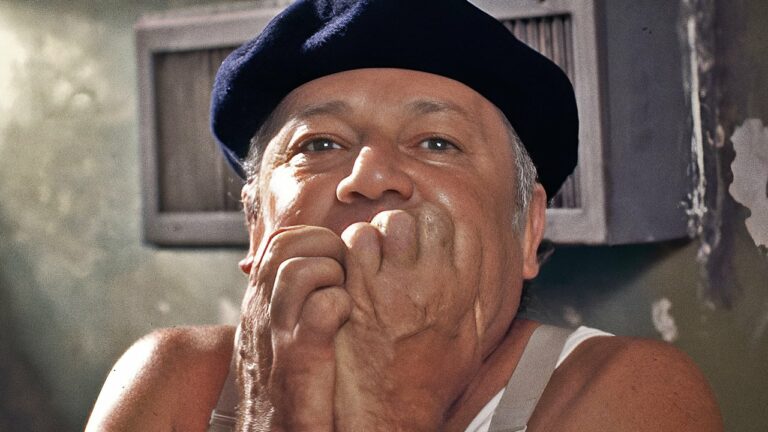
Bread, Love and Dreams, or Pane, Amore e Fantasia in Italian, is a 1953 romantic comedy directed by the acclaimed Luigi Comencini. The film stands as a hallmark of post-war Italian cinema, blending romance, humor, and social commentary. At the 4th Berlin International Film Festival, it was awarded the prestigious Silver Bear, solidifying its place in cinematic history.
This article explores the cultural and historical significance of the film, its plot, characters, and enduring legacy in Italian and global cinema.
A Glimpse into Post-War Italian Cinema
To fully appreciate the impact of Bread, Love and Dreams, it is essential to understand the context of Italian cinema in the early 1950s. Following the devastation of World War II, Italy experienced a cultural renaissance in filmmaking, marked by the rise of Italian Neorealism. This movement emphasized stories of ordinary people, often portrayed with raw realism and emotional depth. Directors like Vittorio De Sica, Federico Fellini, and Roberto Rossellini championed this style.
Luigi Comencini’s work, while sharing the humane essence of Neorealism, introduced a more optimistic and lighthearted approach. Bread, Love and Dreams exemplifies this blend, offering a comedic yet poignant glimpse into the lives of rural Italians.
The Plot: A Tale of Love and Simplicity
Bread, Love and Dreams is set in a picturesque village in southern Italy, where traditions and community ties shape daily life. The narrative revolves around Marshal Antonio Carotenuto, played by Vittorio De Sica, who arrives in the village to assume his new post. Despite his mature years, the charismatic marshal finds himself entangled in romantic pursuits.
•Maria “La Bersagliera” (Gina Lollobrigida): A vivacious and spirited young woman who becomes the center of Antonio’s attention. Maria’s beauty and fiery personality make her the talk of the town.
•Pietro Stelluti (Roberto Risso): A shy and earnest carabiniere who harbors feelings for Maria.
•Annarella (Marisa Merlini): The local midwife and widow, who also shares a special bond with Antonio.
The film masterfully intertwines these characters’ stories, blending moments of heartfelt emotion with humorous misunderstandings. The theme of love—universal, complicated, and whimsical—remains at its core.
The Characters: Archetypes of Rural Italy
The strength of Bread, Love and Dreams lies in its memorable characters, who embody the charm and complexities of small-town life.
Marshal Antonio Carotenuto
Antonio is a seasoned, worldly man with a soft heart. His romantic misadventures add humor and depth to the story. Vittorio De Sica’s performance captures the nuances of a character torn between desire and duty.
Maria “La Bersagliera”
Gina Lollobrigida’s portrayal of Maria is iconic. Her character is both rebellious and tender, challenging societal expectations while remaining deeply rooted in her community. Lollobrigida’s charisma brought Maria to life, earning her recognition as a symbol of Italian beauty and spirit.
Annarella
As the widowed midwife, Annarella represents wisdom and resilience. Her interactions with Antonio highlight the film’s exploration of mature relationships, contrasting with the youthful passion between Maria and Pietro.
Themes and Symbolism in Bread, Love and Dreams
1. Love in All Its Forms
The title itself—Bread, Love and Dreams—suggests a blend of life’s basic needs and its higher aspirations. The film portrays love in its many dimensions: unrequited, romantic, and platonic.
2. Rural Life and Tradition
The idyllic village setting serves as more than just a backdrop; it is a character in its own right. From bustling town squares to intimate gatherings, the film paints a vivid picture of post-war rural Italy, where traditions often clash with changing societal norms.
3. Humor and Humanity
Luigi Comencini’s direction ensures that even the most serious moments are tinged with humor. The laughter comes not from ridicule but from an empathetic understanding of human foibles.
Awards and Recognition
The film’s success was not limited to its box office performance. At the 4th Berlin International Film Festival, it won the Silver Bear, a testament to its artistic merit and universal appeal. The recognition helped introduce international audiences to the warmth and charm of Italian cinema, paving the way for other Italian films to gain global acclaim.
The Legacy of Bread, Love and Dreams
1. A Launchpad for Careers
The film catapulted Gina Lollobrigida to international stardom. Her performance in Bread, Love and Dreams remains one of her most celebrated roles. Vittorio De Sica, already a respected figure, further cemented his reputation as one of Italy’s greatest actors and directors.
2. Influence on Italian Comedy
The film is considered a precursor to the Commedia all’Italiana genre, characterized by its satirical take on Italian society. Comencini’s balance of humor and humanity influenced countless filmmakers.
3. Cultural Significance
More than just a romantic comedy, Bread, Love and Dreams captures the essence of a bygone era. Its portrayal of rural Italy, with all its quirks and customs, offers a nostalgic look at a simpler time.
Bread, Love and Dreams: A Timeless Classic
Decades after its release, Bread, Love and Dreams continues to enchant audiences. Its universal themes, endearing characters, and picturesque setting make it a timeless piece of cinema. The film serves as a reminder of the power of storytelling to bridge cultures and generations.





